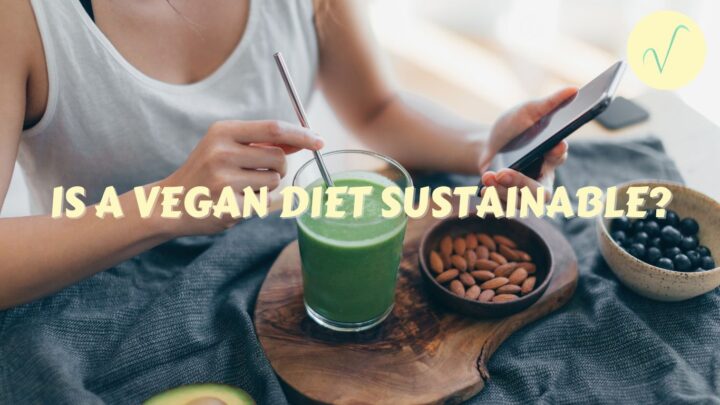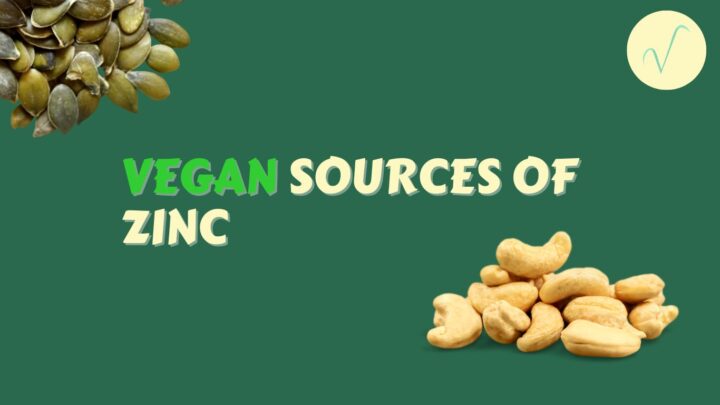It’s well known that a well planned vegan diet is healthier, but depending how you approach it, there may be some room for improvement in terms of sustainability.
This post is going to go through some tips on how to be a more sustainable vegan, as well as factors to consider if you’re wishing to be more sustainable overall.
What factors are affected by unsustainable food production?
When it comes to sustainability in your diet, it’s mainly a conversation about how much resources are consumed in order to sustain your lifestyle.
Factors that come into play are:
- Water consumption
- Damage to soil/environment
- CO2 emissions emitted from food transportation
- Food packaging
- Waste

Shop local
Shopping at your local farmer’s market is a great way to reduce your overall carbon footprint. Typically, farmer’s markets grow local, in-season food that is transported domestically, as opposed to internationally.
Your local supermarket, for instance, typically stocks the same fruits and vegetables year-round, for the sake of consistency. Most of these fruits and vegetables are sourced from elsewhere, especially if you live somewhere like the Netherlands and eat avocado regularly.
Sourcing your food from abroad brings extra concerns in regards to sustainability of its transportation. If you shop local produce, you can guarantee that it uses a lot less emissions.
It’s much more sustainable to have food driven to you than have to go through various modes of transport to reach your plate, so shopping local can be one of the best tips there.

Shop loose and BYO packaging
As well as shopping local, you can also be more sustainable by buying loose products, as opposed to prepackaged fresh produce, that typically overuses plastic. One of the best ways to keep this consistent is to find a local market that allows you to buy all your ingredients by weight.
In Amsterdam, there are some shops that have up to 5 options, where you can weigh out rice, pasta, as well as nuts, seeds and even cereal! Most of the options are vegan too, with decomposable packaging.
I like to also bring my own fruit and vegetable bags and shop from the local fruit market, which also sells vegetables and olives (I bring my own jar for that too).
Of course, not everyone has access to these resources, but do what you can, however that means to you. Even supermarkets sell loose fresh ingredients like fruit and veg, make the most of that and it’ll help you do your bit in terms of sustainability.

Reuse bags
I’m sure we’ve all been guilty of this. You’ve come home after a week’s shop and have got rid of your shopping bag somehow.
This one’s actually a tip I got from my mum, from back when you didn’t even need to pay for shopping bags. My mum always used to have (as I called it) a “bag of bags”, which she’d always use instead of black bags for rubbish.
As I grew up with plastic bags being the main culprit for a lot of worldwide waste, I always reuse my bags, either for bins, or repeated shopping trips. For reducing plastic waste, every little bit does matter, and we sometimes have to take matters into our own hands as far as that’s concerned.

Reconsider food waste
How many times have you ordered take away because you couldn’t be asked to have some leftovers? I know I’ve been guilty of that a lot.
Being more considerate of reducing food waste will make it so that you’re not consuming more than you need, or unnecessarily adding to the growing demand that the food industry faces.
As well as making sure you don’t let you veggies go bad, there are also other ways to ensure your food waste isn’t actually wasted. For instance, I make homemade almond milk and strain the milk through a cheesecloth, but that can still result in a bulky part of oat and almond being thrown out.
Instead, why not try reusing those leftovers, like using the almond pulp to make homemade crackers, or oat crackers with oat pulp. That way you have almond milk as a drink, and homemade crackers to snack on.
It’s not only sustainable in terms of resources, but also saves you money. If you wanted to go an extra level, you can also experiment with adding veggie pulp (from green juices) to the cracker mix and seeing how that goes. Be creative with it, you could discover the next big recipe.
If you grow plants at home, you can always keep your food waste in a compost bin, and reuse your leftover scraps to nourish the soil. You don’t always have to eat your leftovers!

Unsustainable vegan foods to limit
Although a plant-based diet consumes less resources that a typical omnivorous diet, that doesn’t mean a vegan diet is always sustainable. Some foods that are regularly sourced are particularly unsustainable.
These foods include:
- Avocados
- Almonds
- Cocoa
We cover this in more detail in another post, but the main gist of it is the high water consumption and land usage that’s required to consistently provide these ingredients, make these vegan ingredients a lesser sustainable option to consider.
That being said, it is not only vegans who consume avocado, although we do consume more almonds as a result of almond milk consumption.
Cocoa production is essential for the maintenance of the chocolate industry, which is mostly providing milk chocolate, which vegans don’t eat; you can choose to do what you’d like with this information.

Is a vegan diet sustainable?
Overall, a vegan diet is sustainable as compared to an omnivorous diet, pescatarian diet, and even a vegetarian diet. This is due to the lifestyle requiring less resources, in terms of water and overall landmass.
With that, the top tips to be more sustainable as a vegan:
- Shop local
- Shop with your own packaging
- Reuse plastic bags
- Try to consume all the food you buy
- Try to limit unsustainable food sources




